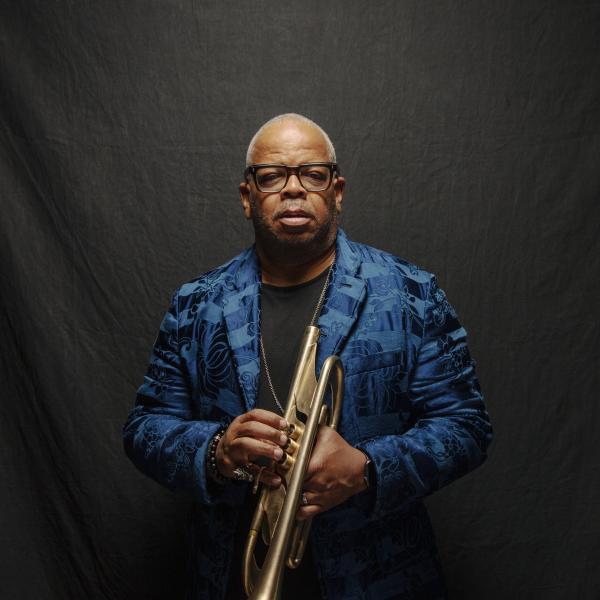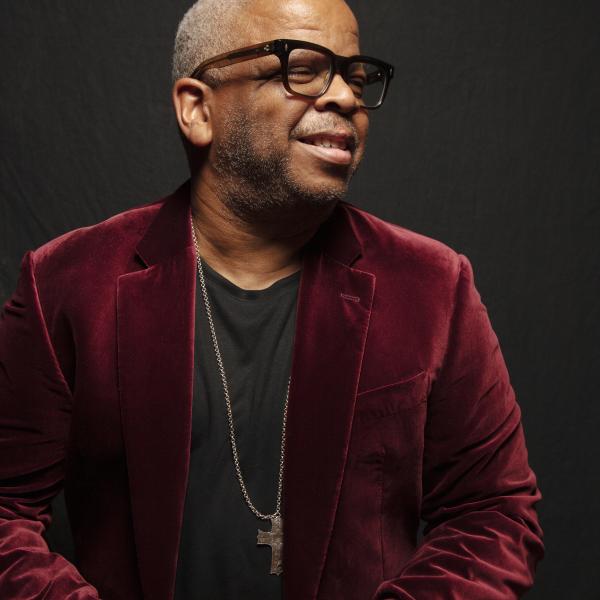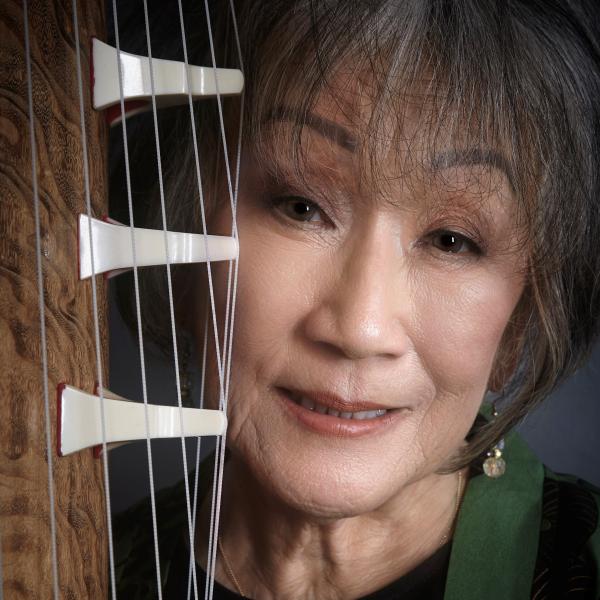Quick Study:
December 19, 2024
Jo Reed: Welcome to Quick Study. I'm Josephine Reed. This is the monthly podcast from the National Endowment for the Arts, where we'll share stats and stories to help us better understand the value of art and everyday life. Sunil Iyengar is the pilot of Quick Study and he's the director of research and analysis here at the Arts Endowment. Good morning, Sunil.
Sunil Iyengar: Good morning Jo. And season's greeting.
Jo Reed: So what do you have for us?
Sunil Iyengar: Well, for the final quick study episode of the year, I thought I'd leave you with an item for my holiday wish list. Now, it doesn't involve asking for a new sweater or a pair of hand knit socks.
Jo Reed: Well, I'm pleased about that. Go on.
Sunil Iyengar: Well, so in terms of arts and cultural research in the us, I'd like to see more focused attention to how digital technology pervades all the artistic disciplines we support. As you know Jo, this is a rapidly exploding area of arts participation in a vital component of today's arts infrastructure, but it's also proved difficult to study over time precisely because it's ever changing. As a result, we often lack stable, consistent measures, and also we're often talking about different things when we talk about arts and technology. Simply put the researchers all over the place, and I'd like to see a greater attempt to put more purpose and intention behind it.
Jo Reed: Okay. You do realize this is a five minute podcast?
Sunil Iyengar: Yes!
Jo Reed: So how do you want to approach this?
Sunil Iyengar: So if the goal is to arrive down the road at a more detailed and comprehensive grasp of how technology affects arts creation and distribution, I thought I might begin by describing some attempts our agency colleagues have taken to get a handle on these issues. In the past. First, back in 2020 with additional support from the Ford and Knight Foundations, the NEA released a report titled Tech as Art Supporting Artists to Use Technology Creative Medium. Some of your listeners might be familiar with it. This report was a field scan outlining creative practices of artists who engage with digital technologies. It offered insights into current challenges and opportunities faced by those artists and also by organizations working at the nexus of art and technology. That effort was led by Jax DeLuca, my wonderful colleague at the NEA, who's the director of Film and Media Arts, and by the NEA research office.
We also worked with Jax incidentally to support work at the National Science Foundation to integrate digital arts creation with computer science learning. Finally, sticking with this theme of digital creators, it's notable that in 2024, NSF made an award to UCLA to conduct a year long series of activities involving regional workshops throughout the country and an industry summit, and also a national conference earlier this month to develop a roadmap that will bring culture and creativity to workforce development, research and innovation in STEM fields. So Jackson and I have been in many of those conversations, and we look forward to learning what fruits may come out of those efforts in 2025,
Jo Reed: It sounds like what you're describing so far, those efforts have been to get a better handle on how digital technology in the arts connects with broader creativity and innovation's. What about the general population, both as audiences and creators? I mean, just think of TikTok,
Sunil Iyengar: Right? So I'm glad you asked to me. This is one of the missing links in our data about arts participation. We're pretty good at capturing information about the types of art forms in which people create, for example, but we've run into challenges and learning about the platforms on which they do. So at least with large scale federal data. On the other hand, we are able to trace people's arts activities when it comes to consumption through digital media. So let me explain. Last year we released results from two surveys of how Americans participate in the arts. The surveys showed that between 75 and 82% of adults attended some type of digital arts activity, which may have included viewing or listening to archived and live stream performing arts events, listening to arts related podcasts, viewing or listening to archived or live stream reading events, taking online art classes and attending online art exhibits or gallery tours.
Not only that, but 30% of adults reported doing one or more digital arts activities more often than they did in 2020. The year that COVID-19 came to the us, as you might expect, Jo, more young adults that is 18- to 24-year-olds reported doing these activities than older adults. And they also were more likely to report doing them more often than in the first year of the pandemic. But we also saw higher rates of various other demographic groups choosing to participate digitally in the arts. So for instance, roughly half of all blacks and African-Americans and other non-Hispanic and not non-white respondents, as well as over a third of Hispanic adults reported doing one or more digital activity more often than in the first year of the pandemic. That compares with 24% of white adults.
Jo Reed: I wonder, Sunil about, I'm not sure if quality is the right word, but I guess it is, of the digital arts activities that they were engaged with. I mean, are they professionally produced sort of like a music video or are they more informal?
Sunil Iyengar: Yeah. So to me that's the big question. I think when we talk about arts participation, we fold in all kinds of activities and events, which is as it should be because the cultural field is so vast, but it's harder, especially with our questions about digital arts engagement to know just what we're talking about. For example, even on the economic side, the supply side, we know that the fastest growing arts industry is web streaming and web publishing. But what do these activities consist of? Are we only talking about large service providers like Hulu or Netflix? It's a bit of a black box.
Jo Reed: Okay. So I think I know what your holiday wishlist is. Is it a more granular understanding of how technology intersects with arts participation?
Sunil Iyengar: Yes, that's definitely part of it. Jo, you may have heard of the theorist Richard Florida several years ago. He popularized the concept of the creative class in a book of the same title just a few weeks ago. He produced a report on the so-called creator revolution. It was an international survey of people who create and share original content via social media and have 1000 or more followers on at least one of the platforms they use. So through the survey, Florida and his colleagues estimate there are 362 million digital creators spanning 20 countries, and that the US itself hosts 39 million digital creators. They also estimate a direct economic impact of 29 billion in the US alone, resulting from digital creators and influencers. Among those creators, Florida figures that fewer than 1% have a million or more followers, but 75% have fewer than 10,000 followers with more than 60% having fewer than 5,000 followers. Also, it appears that the vast majority of digital creators are employed in other jobs. Just 2% of all digital creators in the survey were contractor gig workers. But here again, we don't know exactly what's being produced. The term digital creators, as you can appreciate, is quite expansive.
Jo Reed: Yeah, I know. Cat videos, anyone?
Sunil Iyengar: Yeah,
Jo Reed: No digs on cat videos. Just saying.
Sunil Iyengar: Of course not. So I guess, in terms of the threshold for the study, there had to have been at least 1000 followers for each creator, which suggests some kind of bar. But either way, we're not in a position of understanding what types of activities are contributing to this demand, especially among youth. So I've often thought if I were an economist in this space, I'd write an article called “No Accounting for Taste” with an emphasis on the verb. So I want to point out that just a few days after Richard Florida's study came out, pew Research Center released their periodic report on teenagers use of social media and streaming platforms. They found that roughly a third of all teens said they use at least one of five streaming platforms constantly. So I'm glossing over lots of details in in the Richard Florida report, but I do think these findings are especially noteworthy in light of a health advisory that outgoing Surgeon, General Vivek Murthy issued last year about the potentially adverse effects of social media use among teenagers. So there's really lots to study here, and at least in the arts, we need better and more accurate taxonomies to reflect the state of play.
Jo Reed: And I trust you and the NEA research office will help puzzle that one out. Very generous. I'm not at all. Thank you, Sunil. Thank you and happy holidays.
Sunil Iyengar: Thank you, Jo. Thanks a lot.
Jo Reed: That was Sunil Iyengar. He's the Director of Research and Analysis here at the National Endowment for the Arts. You've been listening to Quick Study. The music is “We Are One” from Scott Holmes Music. It's licensed through Creative Commons. Until next month, I'm Josephine Reed. Thanks for listening and happy holidays to all.
In this episode of Quick Study, we discuss digital creators and how data can help illuminate a field marked by hybridity and rapidly evolving practice.




